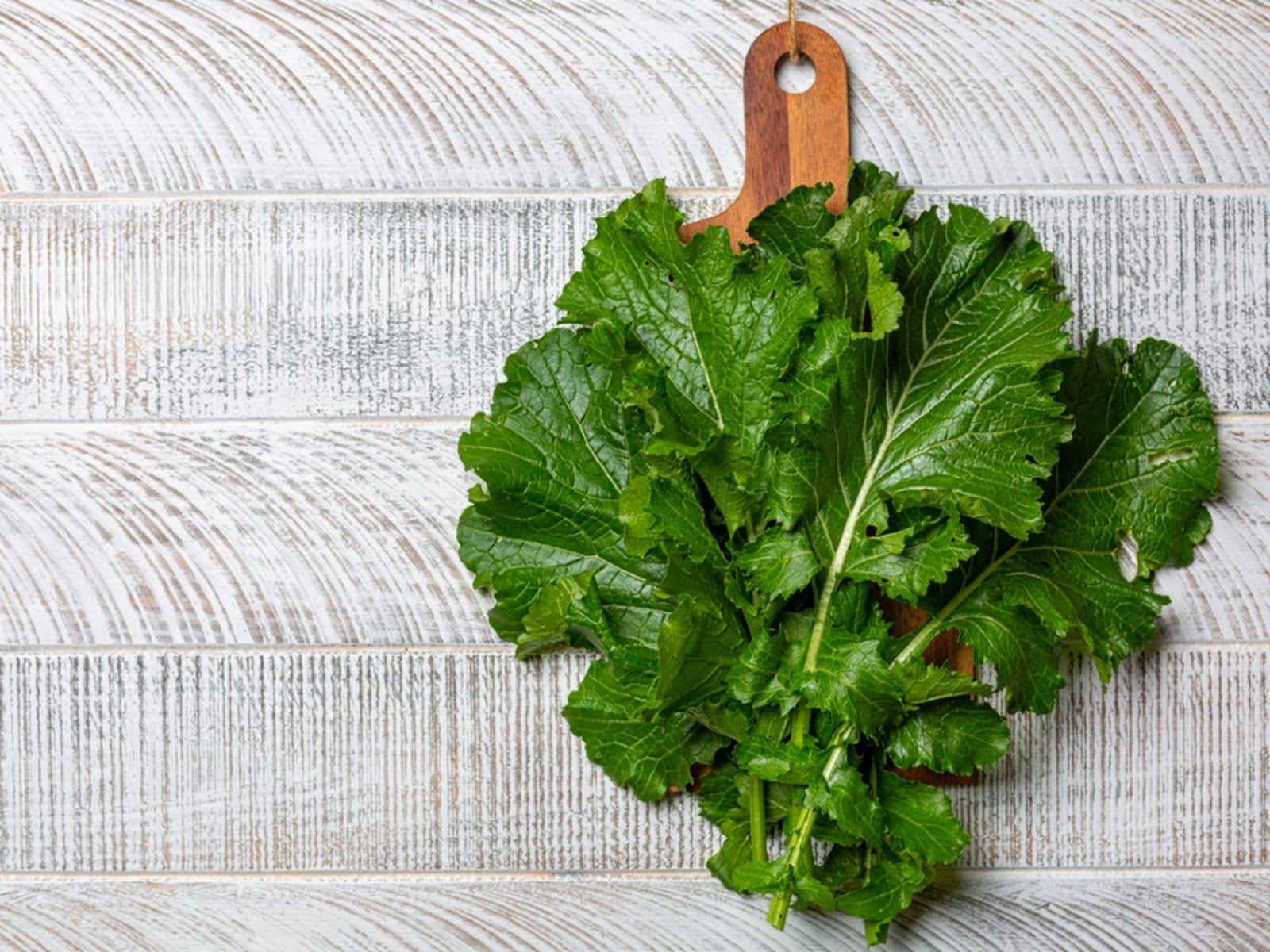
Most people are familiar with turnip roots, similar to potatoes in texture but with a peppery taste, but what about cooking with turnip greens? Can you eat turnip greens? Absolutely, and many people love them. Turnips were introduced into the United States by early European settlers. They thrived in the South’s climate and soon became a staple there. Turnips are still eaten more often in the South than in northern states where they are often simply sautéed and seasoned. Keep reading to learn all about turnip greens including nutrition facts and how to prepare turnip greens.
What are Turnip Greens?
Turnips are creamy white veggies with purple tops. Often erroneously referred to as root vegetables, turnips are actually related to Brassicas such as broccoli, Brussels sprouts, arugula and kale.
While turnips can be used much as you would a potato, the greens are something else. Turnip greens are the dark leafy tops of turnips. They are often cut off and discarded, which is a mistake. Save the greens and use them like lettuce or cook with them instead. What do they taste like?
Turnip greens have a hint of the peppery flavor found in the vegetable but milder, along with a fresh green flavor. There are over 30 varieties of turnip. Some are sweet like a carrot and some have a starchy potato-like flavor, meaning greens will have a slightly different taste depending upon the variety.
Are Turnip Greens Good for You?
Turnip greens are packed with vitamins A and C. One of the oldest crops thought to have been cultivated over 4000 years ago, turnips also have a significant amount of vitamin K and folate. They’re rich in minerals such as calcium, iron, magnesium, phosphorous, potassium and zinc, all with only 18 calories per serving.
Turnip greens are also thought to protect the cardiovascular system and to help stave off heart disease, hypertension and stroke.
How to Prepare Turnip Greens
Turnip greens grow from May through June and September through November. Pick leaves that are young and tender and then either use immediately or store in the refrigerator for 2-3 days.
Sign up for the Gardening Know How newsletter today and receive a free copy of our e-book "How to Grow Delicious Tomatoes".
Prior to using the greens, wash them well in room temperature water. Remove the roots, any tough ribs and center stalks if the leaves are more mature.
How to Cook Turnip Greens
To cook turnip greens, add the washed greens to a pan filled with ¼ inch (6ml.) of water and bring to a boil. Cover and cook the greens until tender, about 1-3 minutes. Mature leaves will require additional cooking time and take between 5-10 minutes. The greens can be simply seasoned with salt and pepper.
Turnip greens can also be sautéed and seasoned with soy sauce, lemon juice and cayenne or any combination of allspice, onion, nutmeg or vinegar.
Turnip greens are also excellent in soup. They are often combined with turkey or cooked down with bacon or salt pork for added flavor and served with beans and rice or on hot buttered corn bread.
How to Freeze Turnip Greens
To lengthen the shelf life of turnip greens freeze them for up to a year. Wash the young, tender leaves and cut off any woody stems. Blanch the greens for 2-3 minutes in boiling water. Drain and cool the greens and then package in a sealed, labeled plastic freezer bag.

Amy Grant has been gardening for 30 years and writing for 15. A professional chef and caterer, Amy's area of expertise is culinary gardening.
